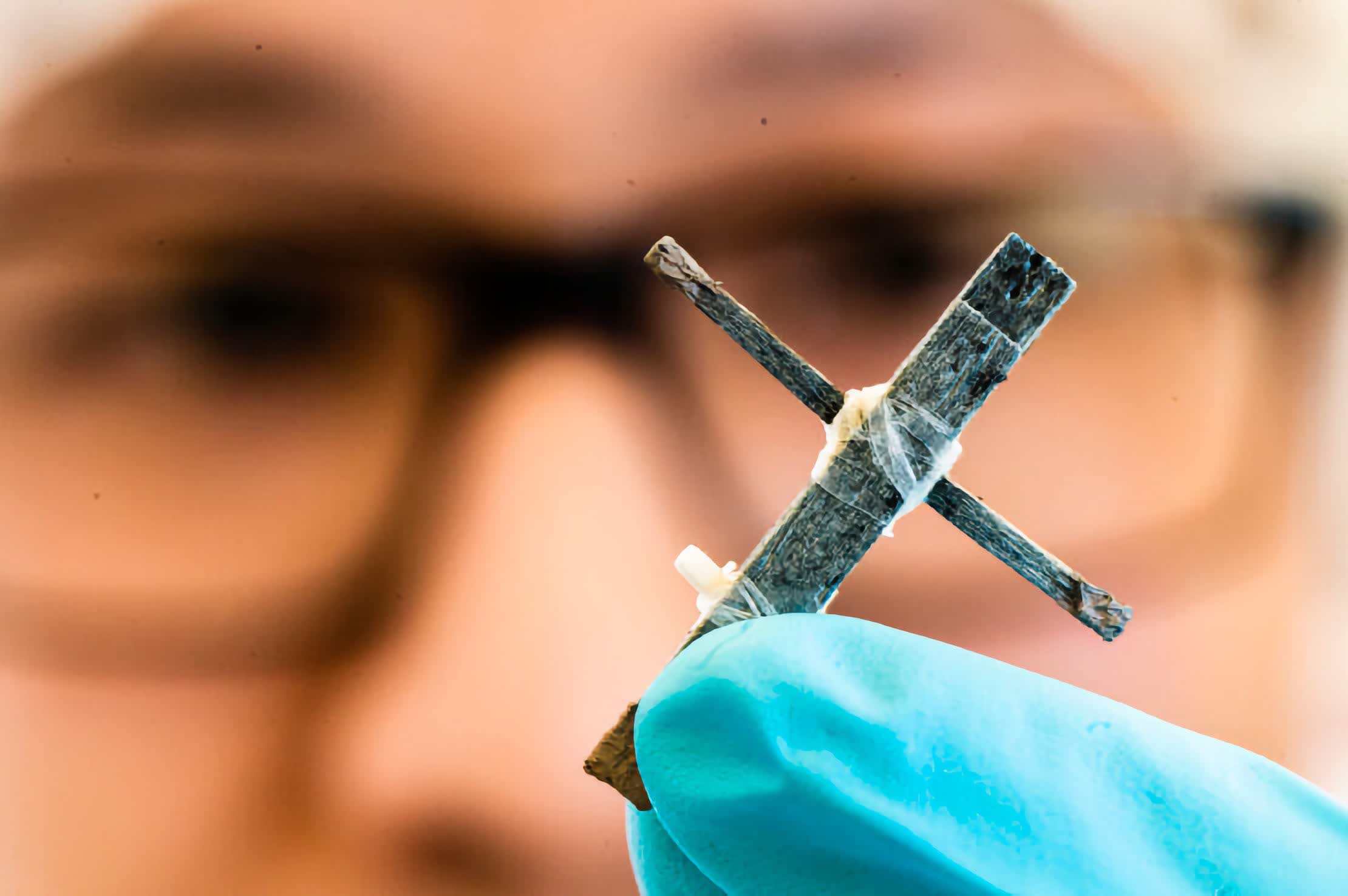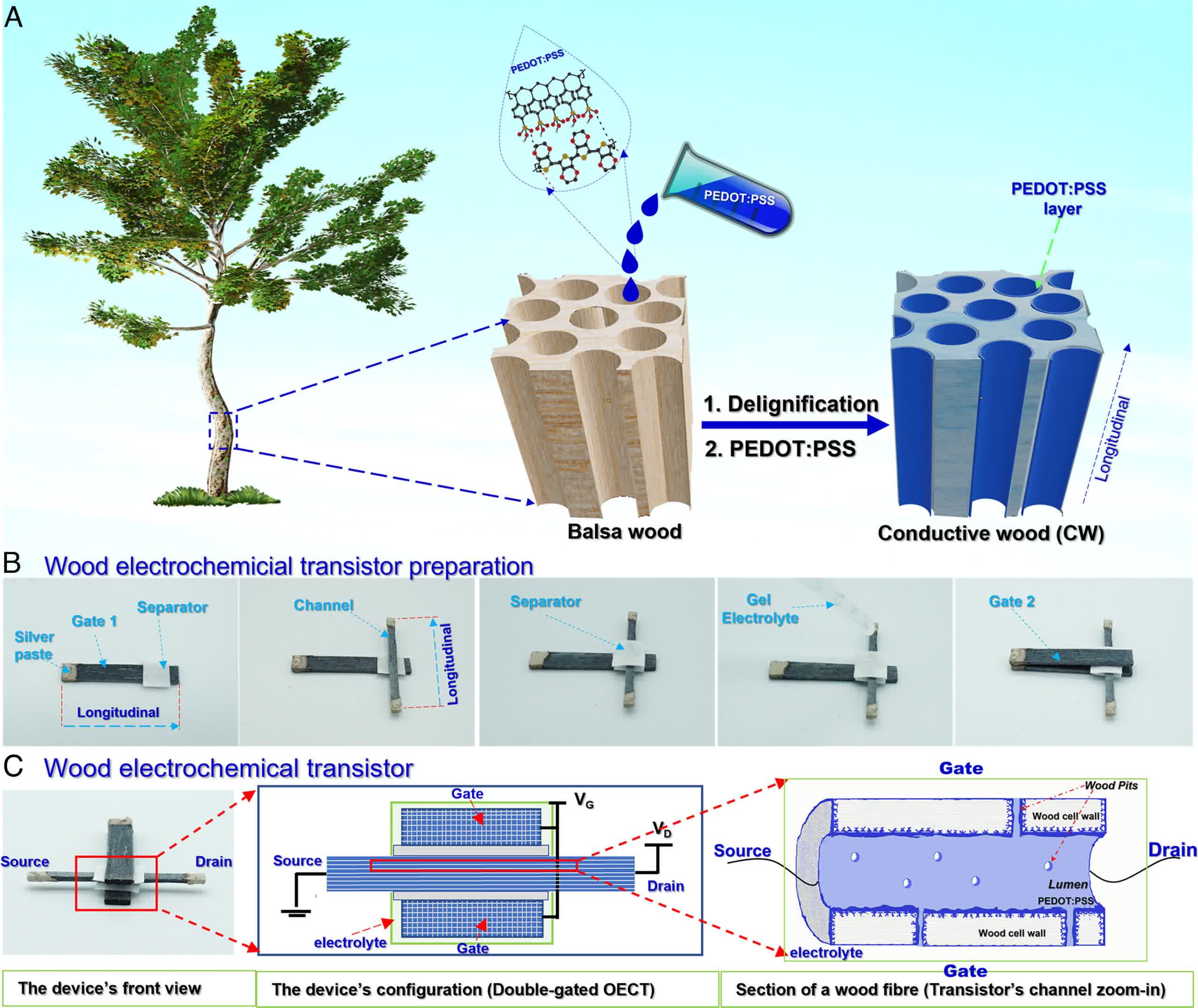WTF?! Silicon has been the material of choice for the semiconductors that power our electronics for decades. Manufacturers and designers are looking for alternatives as they begin to question how much longer Moore's Law can last. While wood likely won't have many practical applications for most users, researchers in Sweden are exploring its potential benefits.
Researchers at two Swedish universities recently unveiled the world's first electrical transistor built from conductive wood. While it performs nowhere near as well as modern silicon transistors, it could theoretically help in certain areas.
A prior trial combining wood and silver produced a transistor that relied on ionic transmission, but ionic charge buildup would likely limit its longevity. The latest test, which uses conductive wood for all components, should create a longer-lasting transistor.
The researchers at KTH Royal Institute of Technology in Stockholm and Linköping University favored the grainless and even structure of balsa wood, increasing its conductivity by removing the lignin and adding polyethylene dioxythiophene polystyrene sulfonate. While there is room for improvement, the results prove it's possible to regulate electric currents through conductive wood to create a functioning wood transistor.
Click to enlarge
The transistor cycles at around 1Hz, if even that. While it switches off in around one second, switching it on takes longer than five seconds, which the researchers find impressive for a 1mm transistor channel. Furthermore, photos indicate the transistor measures a few centimeters across. For comparison, companies like TSMC are currently building 3nm semiconductors for devices with frequencies measured in MHz and GHz.
While wood will likely never fill the same role as silicon or whatever manufacturers use to replace silicon, certain types of devices could utilize it. In specific cases, it could help create biodegradable electronics that are more sustainable than silicon.
One potential application is in electrochromic displays, which companies already use in products like smart glass, smart labels, and other e-paper devices. They can perform very basic computing functions in extremely thin, flexible form factors that use tiny amounts of electricity.
The research that went into creating the wood transistor could also help the development of other sustainable solutions like bioelectronics and plant-based electronics. Furthermore, wood transistors might tolerate higher currents than typical organic transistors.
Masthead credit: Thor Balkhed

